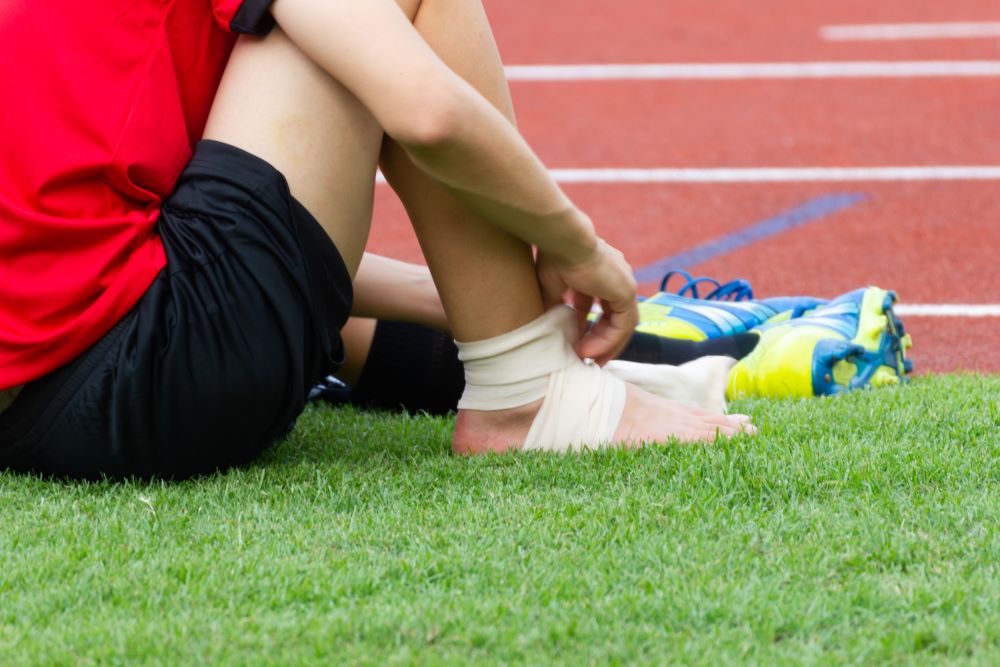Whether you’re a weekend warrior, an aspiring athlete, or someone simply trying to stay active, injuries are an unfortunate part of the game. But professional trainers and athletes don’t just sit back and hope for the best—they actively take steps to avoid injuries and bounce back quickly when they do occur. The good news? Many of their techniques and habits can be used by anyone. Here’s what the pros do differently—and how you can apply their injury prevention and recovery tips to your own routine.
Warm Up Like the Pros
A proper warm-up is more than just a few arm circles or a quick jog. Professional trainers emphasize dynamic warm-ups that activate major muscle groups, elevate heart rate, and prepare the body for movement. Movements like leg swings, high knees, and arm reaches help increase flexibility and blood flow. Skipping this step can leave your muscles stiff and more vulnerable to strains. Trainers often build warm-up routines that mimic the movements used in the workout or sport ahead.
For example, if you’re about to run, your warm-up should include drills that involve short sprints and changes in direction. Another pro tip? Keep your warm-up between 10 to 15 minutes to get the most benefit without draining your energy. Doing this consistently can help you reduce the risk of injury over time.
Build Strength for Injury Prevention
You might think strength training is just about building muscle, but it plays a huge role in injury prevention. Trainers know that strong muscles provide better support for your joints, which can reduce the risk of sprains and overuse injuries. Core strength, in particular, helps stabilize your body during movement and reduces the chance of awkward motions that lead to injury. Pro athletes often follow programs tailored to their specific sports and bodies—but even a general strength routine that includes squats, lunges, and planks can be hugely beneficial. You don’t need heavy weights either; even bodyweight exercises done consistently make a big difference.
Trainers also advise focusing on balance and stability exercises. These might seem simple, but they train the smaller muscles that support movement and coordination. It’s about being strong in the right ways, not just lifting the heaviest weight.
Prioritize Recovery Every Time
Many amateur athletes overlook recovery, thinking it’s only for the elite. But pros take it seriously, and for good reason. Recovery allows the body to repair itself and grow stronger between workouts. Trainers stress the importance of getting enough sleep, staying hydrated, and fueling properly after exercise. Foam rolling, stretching, and massage are also commonly used to speed up muscle recovery.
Active recovery days—where you do light movement like walking or swimming—help keep the blood flowing and prevent stiffness. Recovery isn’t just physical, either. Taking time to mentally decompress also contributes to long-term performance. Remember, rest isn’t a sign of weakness; it’s part of the plan.
Listen to Your Body
One of the biggest differences between professionals and amateurs is their ability to listen to their bodies. Trainers teach athletes how to distinguish between normal muscle fatigue and the early signs of injury. Pain that’s sharp, persistent, or causes you to change how you move is usually a red flag. Professionals are trained to scale back or modify workouts when something feels off. And when things do go wrong, they don’t wait it out in denial—they seek support quickly. That might mean visiting a physical therapist, athletic trainer, or a specialist in sports medicine.
For those dealing with recurring pain or sports injuries, seeing a sports injuries doctor, from institution like Active Spine & Joint can make a huge difference in recovery and long-term performance. These specialists can pinpoint the root cause of the issue and tailor a treatment plan specific to your body’s needs. With the right care, you can get back to your routine faster and with greater confidence. Plus, acting early can often mean the difference between a short break and a long layoff.
Approach Treatment with Purpose
When an injury does happen, professionals don’t rely on guesswork. They follow protocols designed to promote healing without causing setbacks. Trainers typically use the RICE method—rest, ice, compression, and elevation—right after an injury, especially for sprains or swelling. But they also look at the bigger picture.
Once the initial inflammation goes down, they transition into rehabilitation exercises that strengthen the injured area and restore mobility. They don’t rush back into intense activity; instead, they take it one step at a time, testing their range of motion and gradually increasing intensity. Communication with medical professionals is key throughout this process. A big part of successful treatment is patience—something trainers constantly reinforce with their clients. Healing right the first time prevents reinjury and builds confidence for future movement.
Conclusion
Preventing and treating injuries isn’t just about avoiding pain—it’s about keeping your body strong, functional, and ready to move. The habits that professional trainers rely on aren’t exclusive to elite athletes; they’re practical strategies that can be adapted to any fitness level. From warming up with purpose to giving your body time to recover, these small efforts add up to long-term results.
By staying consistent, paying attention to your body, and seeking proper care when needed, you can continue doing the activities you love without frequent setbacks. It’s not about being perfect—it’s about being proactive. Injuries happen, but how you prepare for and respond to them makes all the difference.


